
Senior Fellows attending the Senior Executive Asia-Pacific Orientation Course (SEAPOC 15-1) take part in a plenary session led by U.S. Air Force Lt. Gen. (Ret) Dan Leaf at the Daniel K. Inouye Asia-Pacific Center for Security Studies.
The Daniel K. Inouye Asia-Pacific Center for Security Studies wrapped up the latest iteration of its Senior Executive Asia-Pacific Orientation Course (SEAPOC 15-2) last week with 46 Fellows from four nations completing the three-day curriculum.
Participants from Australia, Canada, Japan and the United States took part in the Oct. 7 to 9 program. They gained insight into key drivers of the Asia-Pacific region’s security environment, including its complex challenges and cooperation opportunities.
“The course focuses on mutual security interests of the United States and other Asia-Pacific nations in an interconnected and changing region,” said Dr. Alexander Vuving, course manager. “The curriculum includes an orientation to the major trends and potential outcomes in the region and supports critical thinking about these topics.”
For three days, DKI APCSS faculty immersed Fellows in discussions on the myriad factors impacting regional stability. Among topics addressed were “The Geopolitics of Security: Power Shifts,” by Dr. Mohan Malik, “Regional Security Architecture in the Asia-Pacific” by Vuving, and “Security and the Strategic Effects of Law in the South China Sea,” by Dr. Justin Nankivell.
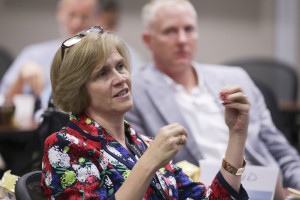
Lynn Simpson, executive director for the U.S. Commander, Pacific Fleet, provides input during a Senior Executive Asia-Pacific Orientation Course (SEAPOC 15-1) topical discussion.
One Fellow praised the course’s on-target offerings. “Much of the material is directly related to my position. One of the highlights was the ability, with electives, to take a large Asia-wide course and whittle it down to what pertained directly to me,” said U.S. Air Force Col. Scott Burnside, who recently assumed duties as U.S. Pacific Command’s Southeast Asia policy division chief.
Participants like Burnside had their choice of 20 electives to include an historical overview of land and maritime disputes in Asia taught by Malik. In this session, Fellows were oriented to the roots of long-festering geography-oriented rivalries — such as the India-Pakistan Kashmir dispute — that are rooted in identity, history, nationalism, domestic politics and resource scarcity. The elective also provided key background material on the current South China Sea situation.
Fellows channeled their enhanced knowledge into an Oct. 9 strategic exercise. Working in several groups, they analyzed key drivers and complexities associated with a multinational dispute over access to maritime resources. Evaluating limits of the existing regional security architecture, groups eventually outlined key elements of an enhanced architecture to lessen regional tensions. Each group briefed their recommendations to senior DKI APCSS staff and their SEAPOC peers.
The exercise is the application phase of a course that promotes interpersonal, interagency and international cooperation in solving what are often transnational challenges.
U.S. Navy Rear Adm. John Korka said the course’s best feature was enabling Fellows to listen to perspectives from people with a variety of experiences. “The purpose is to actually help us understand differing points of view — alternative approaches — to the very significant challenges we have to deal with in the theater,” said the admiral, who is commander of the Naval Facilities Engineering Command Pacific and the U.S. Pacific Fleet civil engineer .
On the course’s day 2, the admiral and his SEAPOC peers teamed with Fellows attending the in-session Advanced Security Cooperation course (ASC 15-2) to discuss current regional issues. They exchanged security perspectives with 114 ASC Fellows from 40 locations.
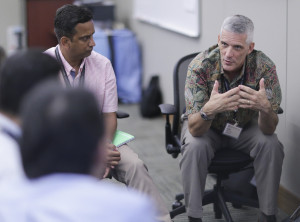
Jim Horton, director of the U.S. National Memorial Cemetery of the Pacific, engages with Fellows enrolled in the Advanced Security Cooperation course (ASC 15-2). Horton was one of 46 Fellows in the Oct. 6 to 9 Senior Executive Asia-Pacific Orientation Course (SEAPOC 15-1) at the Daniel K. Inouye Asia-Pacific Center for Security Studies.
SEAPOC is one of six formal courses at DKI APCSS. The center is a Department of Defense institute that addresses regional and global security issues. Military and civilian representatives, most from the United States and Asia-Pacific nations, participate in a comprehensive program of executive education, professional exchanges and outreach events, both in Hawaii and throughout the Asia-Pacific region.
The Center supports U.S. Pacific Command by developing and sustaining relationships among security practitioners and national security establishments throughout the region. DKI APCSS’ mission is to build capacities and communities of interest by educating, connecting and empowering security practitioners to advance Asia-Pacific security. It is one of the Department of Defense’s five regional security studies centers.
Since opening in 1995, more than 9,500 alumni representing over 122 countries and territories have attended DKI APCSS courses and workshops.
-END-



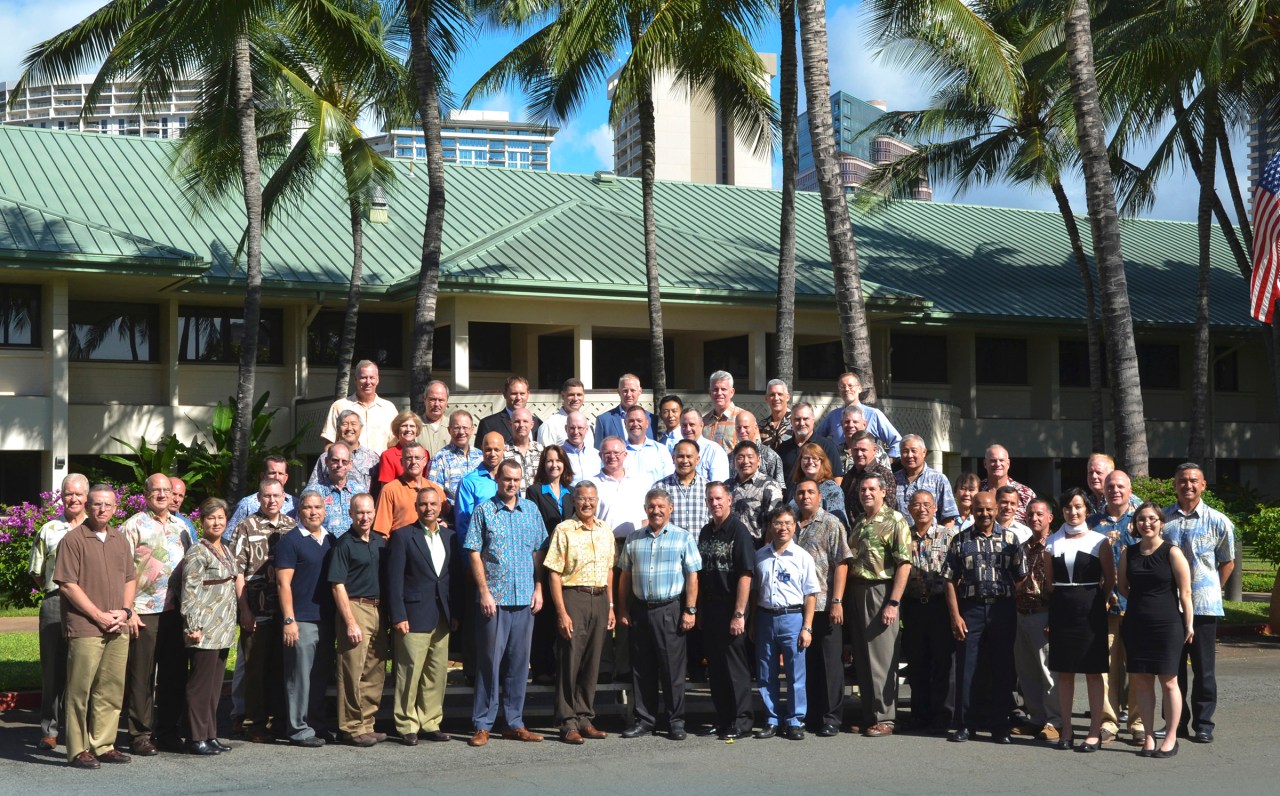
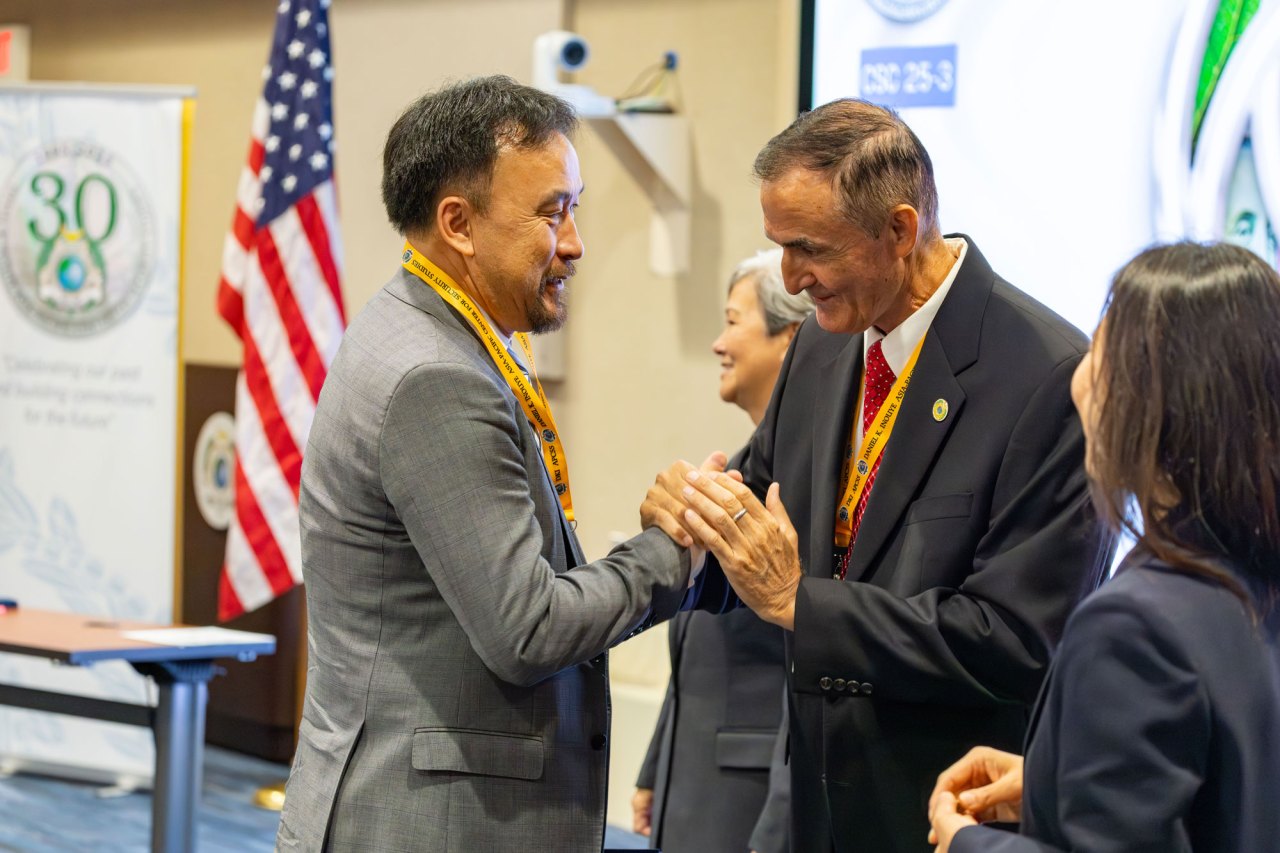
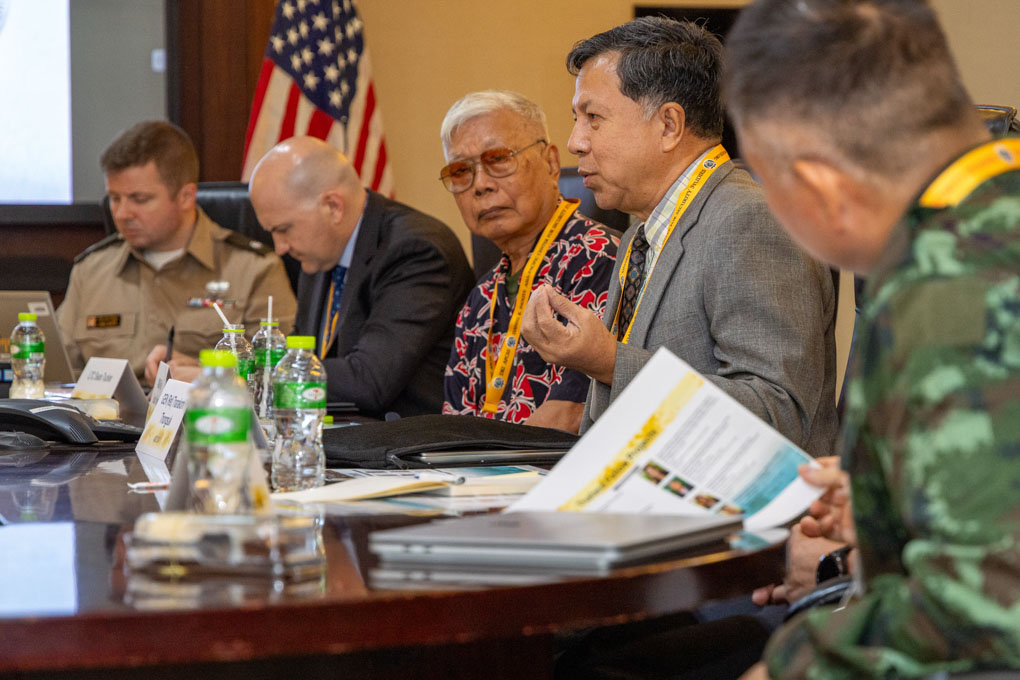
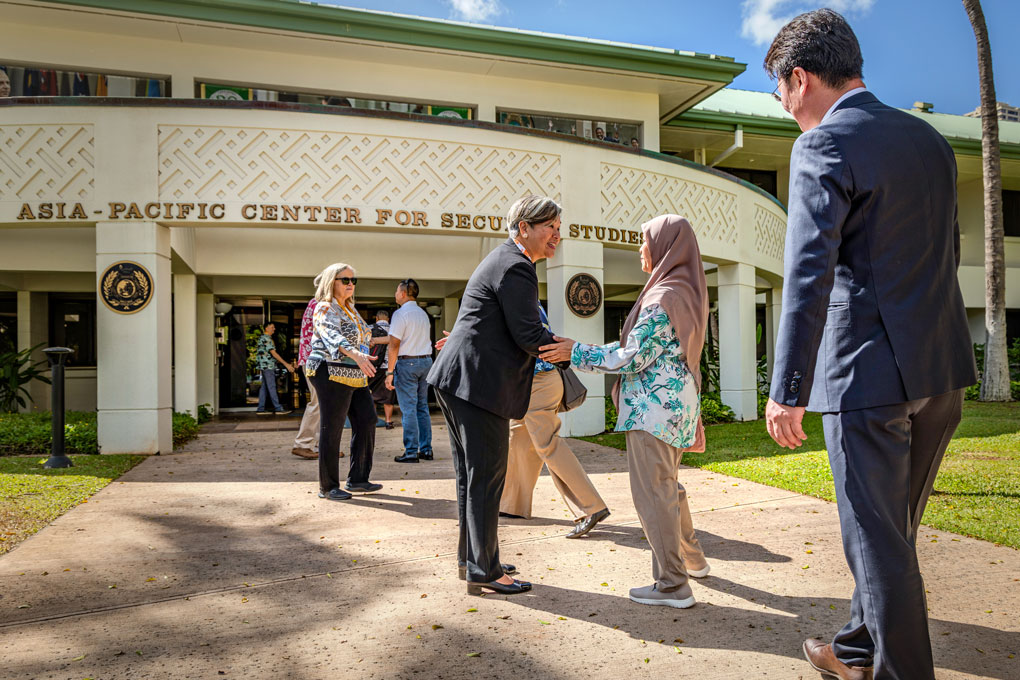




Leave A Comment